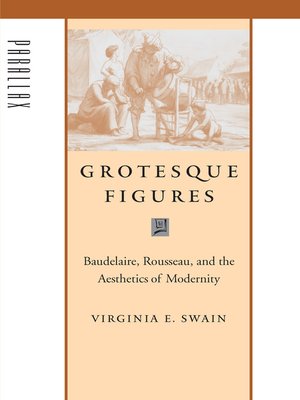Grotesque Figures
ebook ∣ Baudelaire, Rousseau, and the Aesthetics of Modernity · Parallax: Re-visions of Culture and Society
By Virginia E. Swain

Sign up to save your library
With an OverDrive account, you can save your favorite libraries for at-a-glance information about availability. Find out more about OverDrive accounts.
Find this title in Libby, the library reading app by OverDrive.



Search for a digital library with this title
Title found at these libraries:
| Loading... |
Charles Baudelaire is usually read as a paradigmatically modern poet, whose work ushered in a new era of French literature. But the common emphasis on his use of new forms and styles overlooks the complex role of the past in his work. In Grotesque Figures, Virginia E. Swain explores how the specter of the eighteenth century made itself felt in Baudelaire's modern poetry in the pervasive textual and figural presence of Jean-Jacques Rousseau. Not only do Rousseau's ideas inform Baudelaire's theory of the grotesque, but Rousseau makes numerous appearances in Baudelaire's poetry as a caricature or type representing the hold of the Enlightenment and the French Revolution over Baudelaire and his contemporaries. As a character in "Le Poème du hashisch" and the Petits Poèmes en prose, "Rousseau" gives the grotesque a human form.
Swain's literary, cultural, and historical analysis deepens our understanding of Baudelaire and of nineteenth-century aesthetics by relating Baudelaire's poetic theory and practice to Enlightenment debates about allegory and the grotesque in the arts. Offering a novel reading of Baudelaire's ambivalent engagement with the eighteenth-century, Grotesque Figures examines nineteenth-century ideological debates over French identity, Rousseau's political and artistic legacy, the aesthetic and political significance of the rococo, and the presence of the grotesque in the modern.






